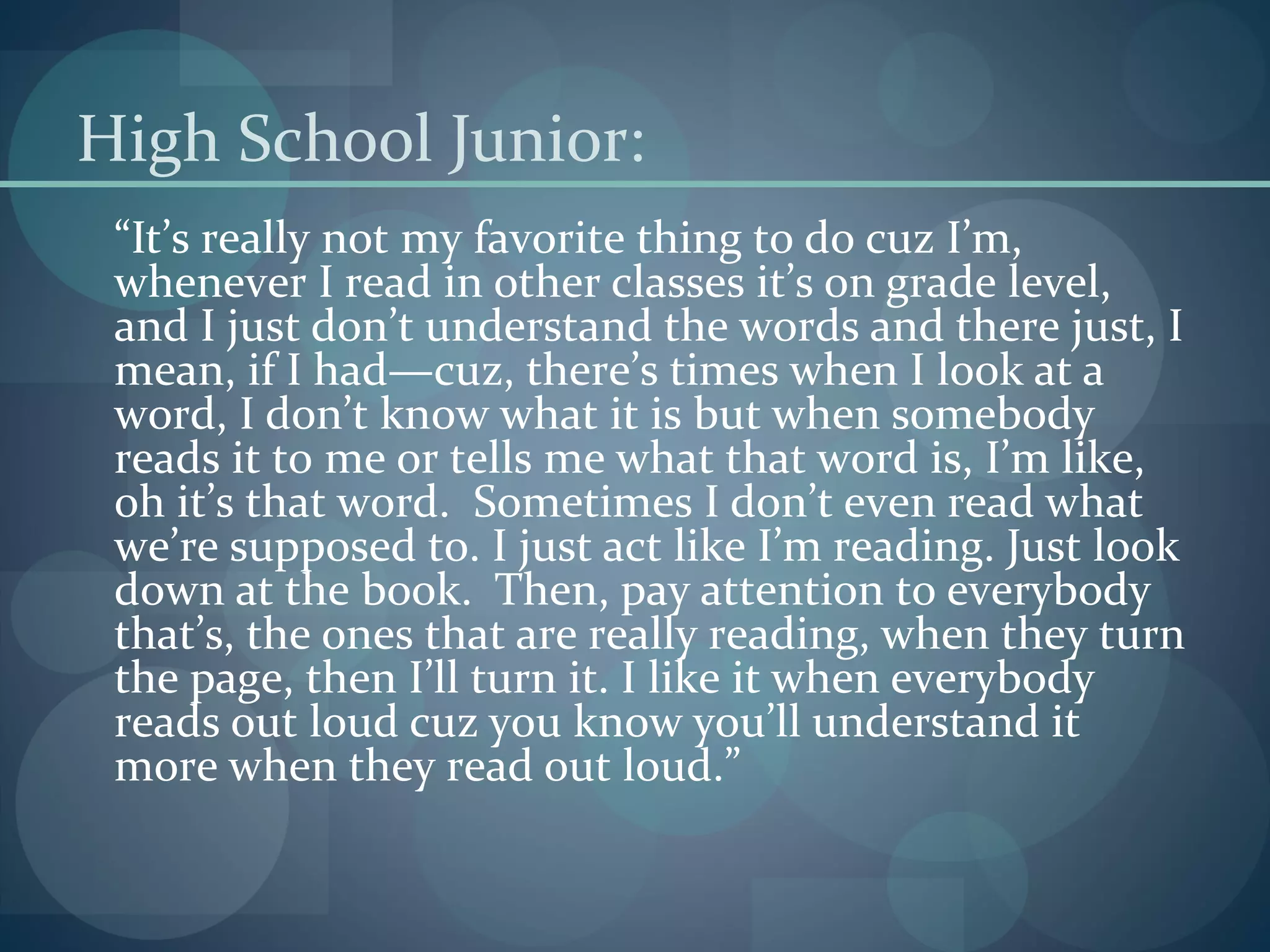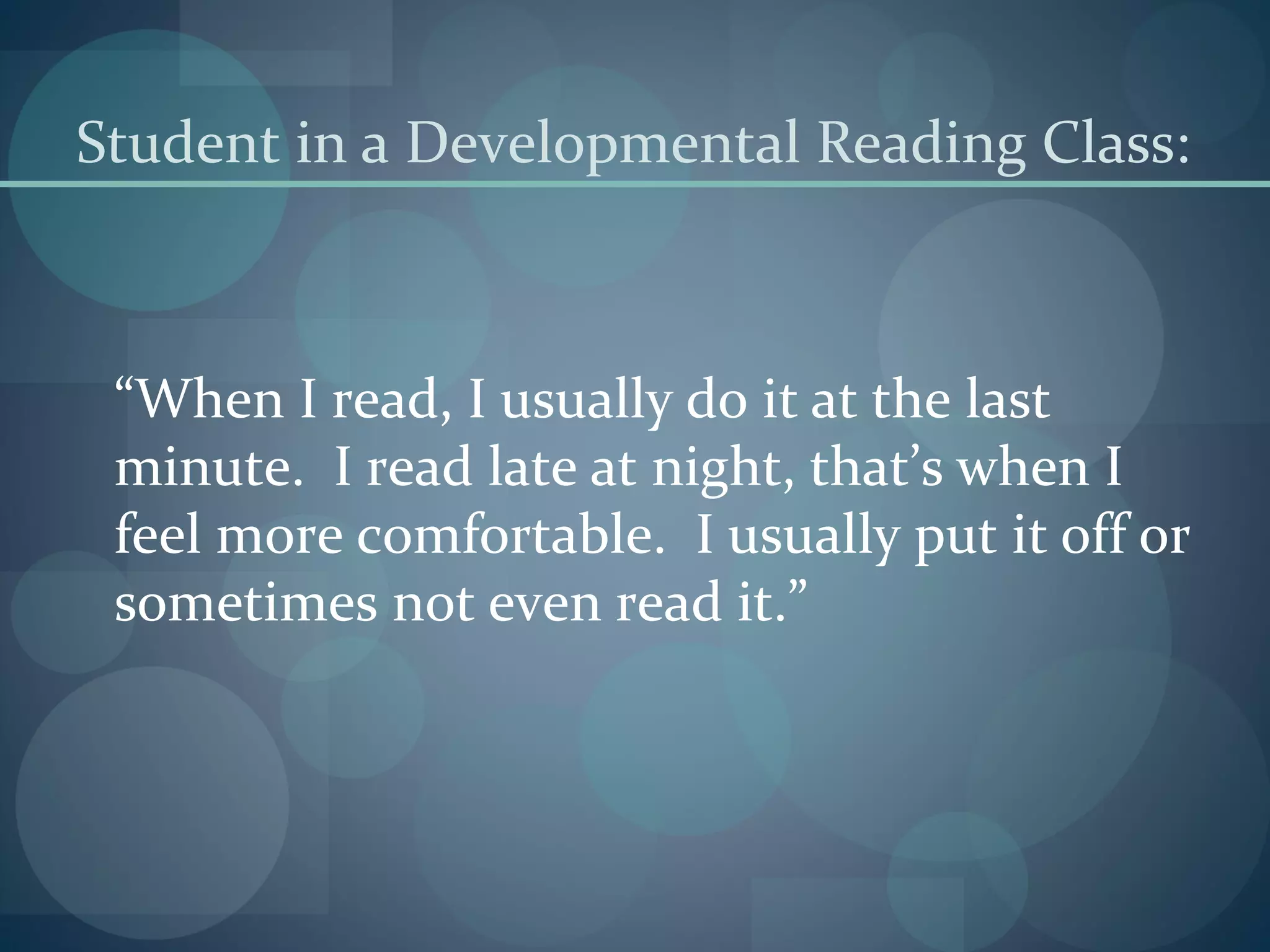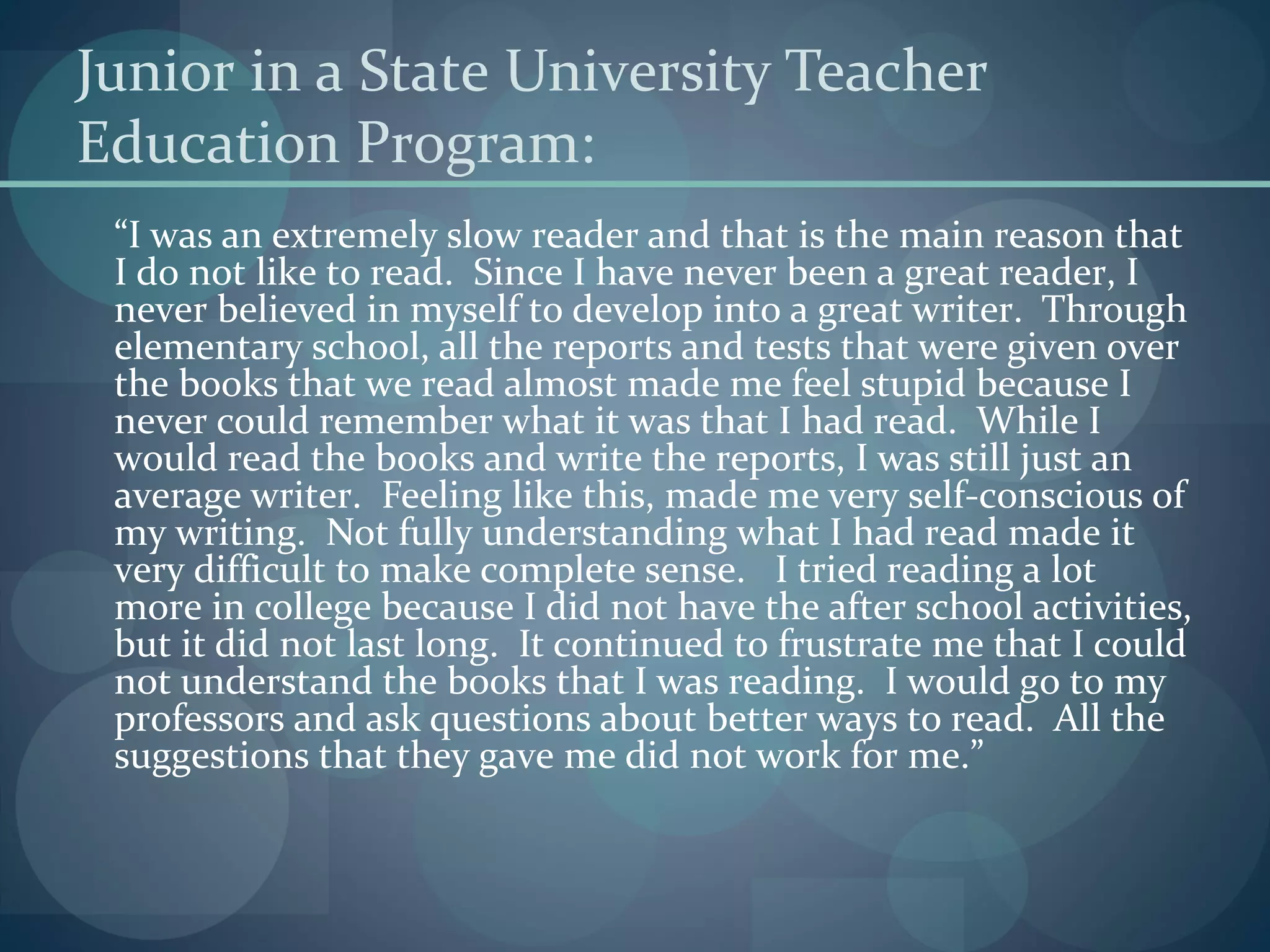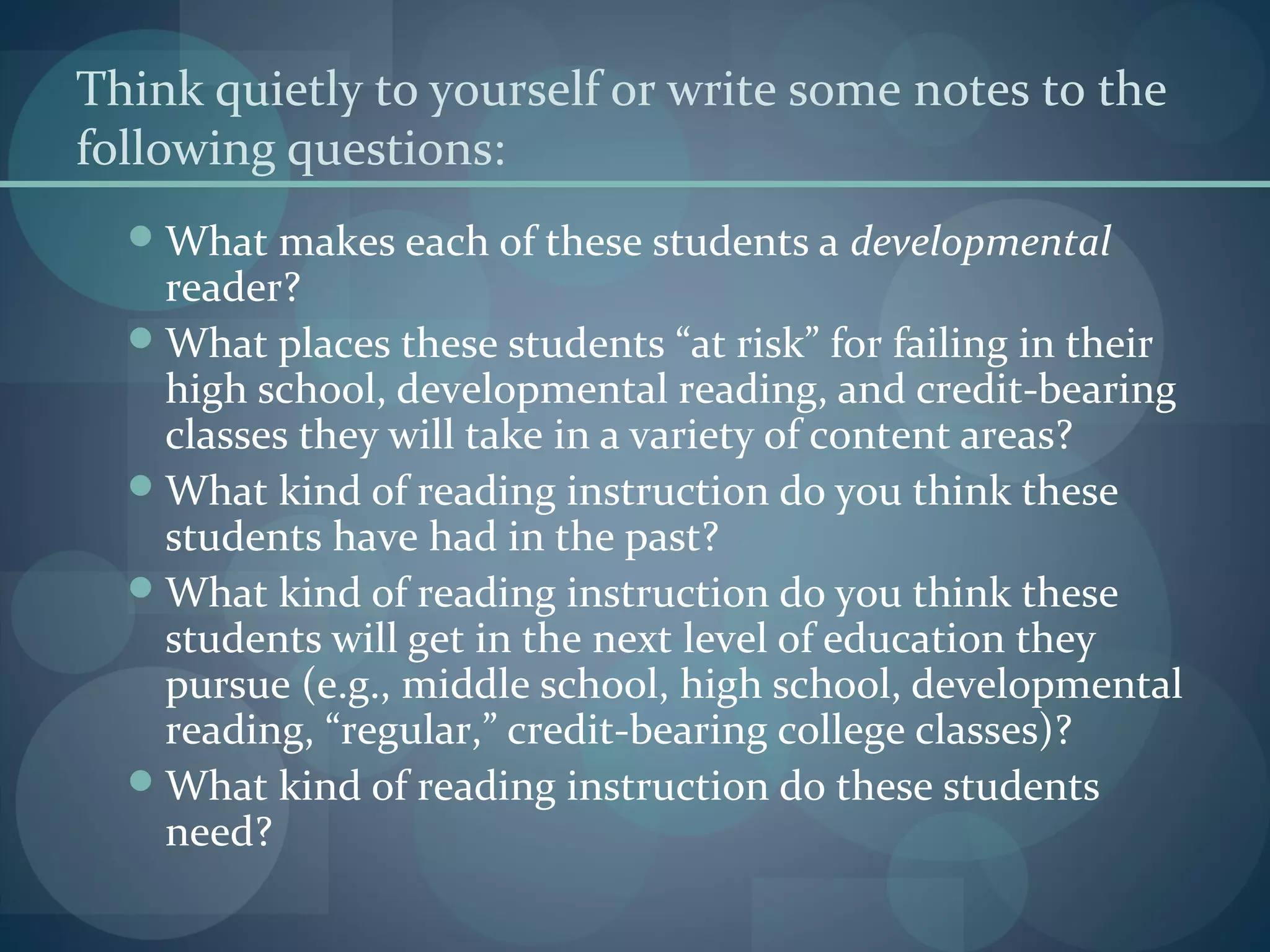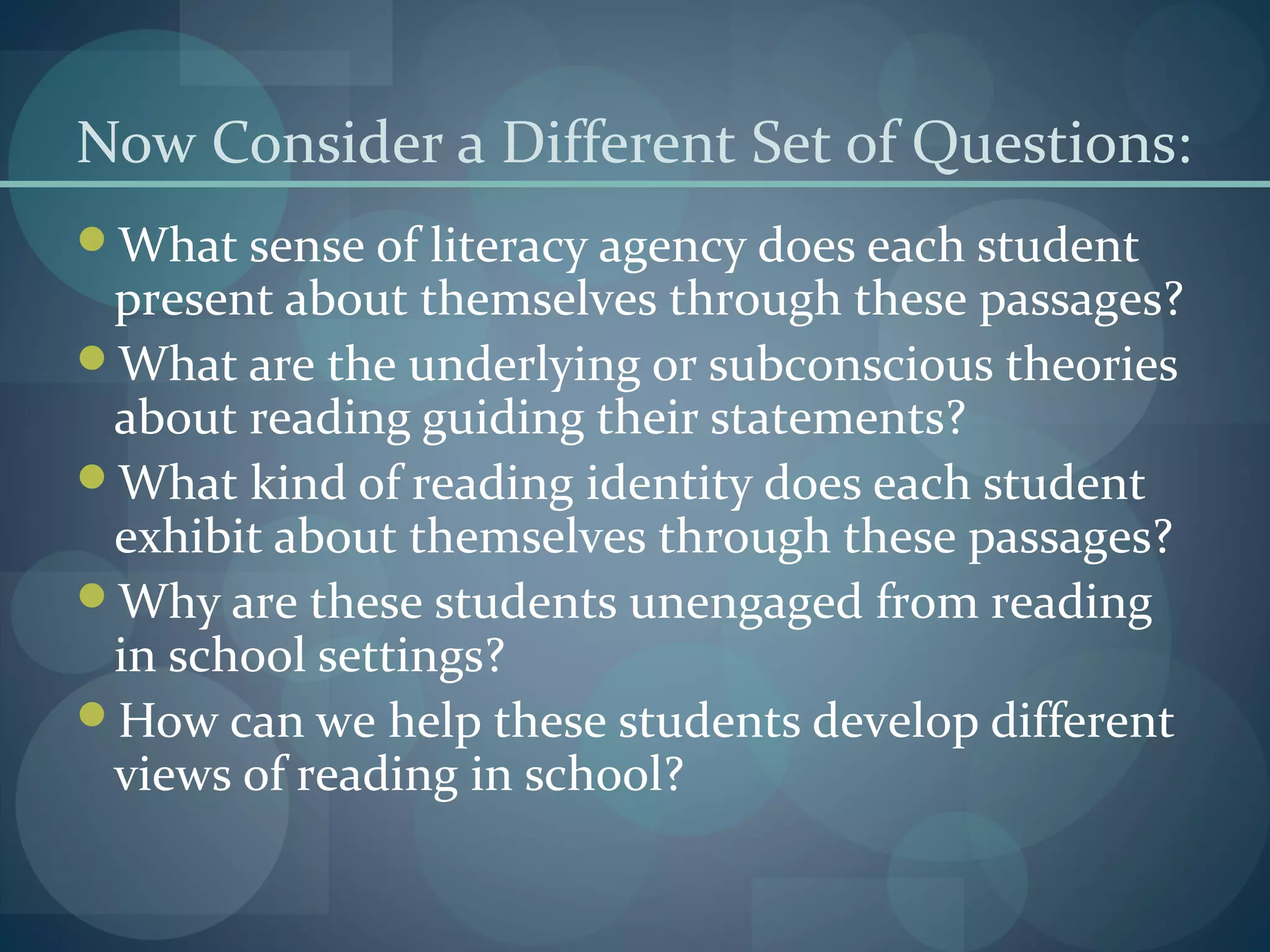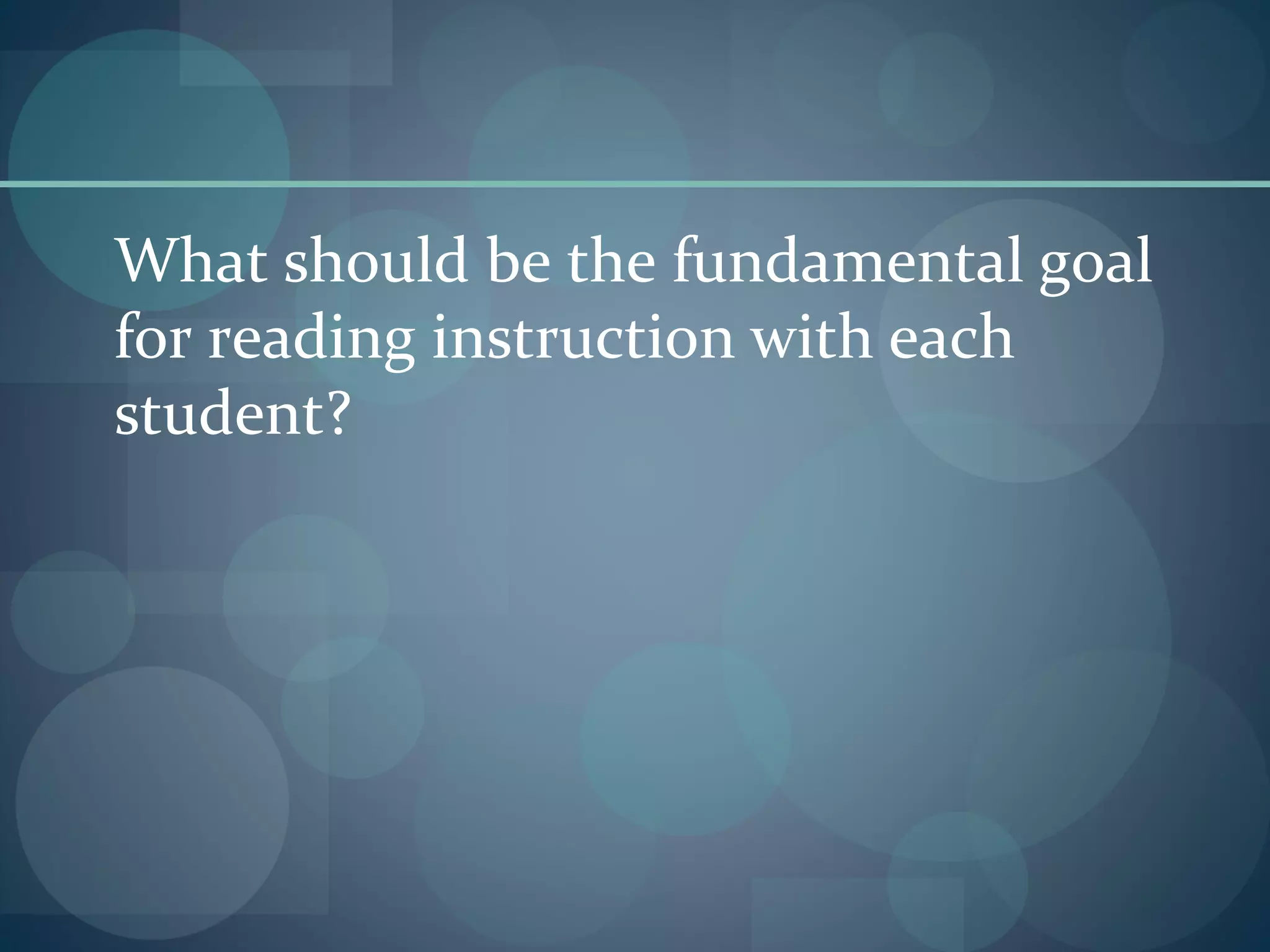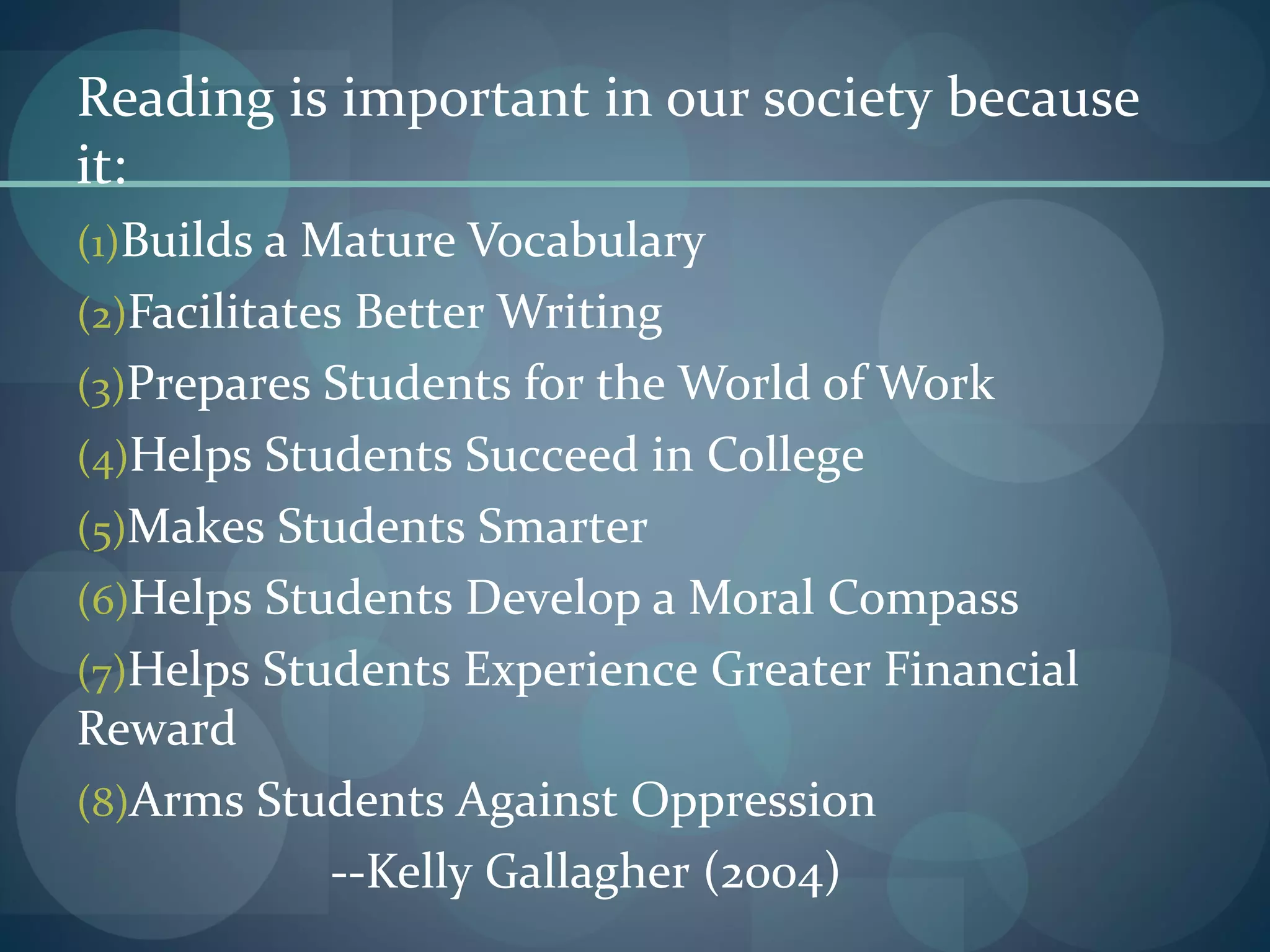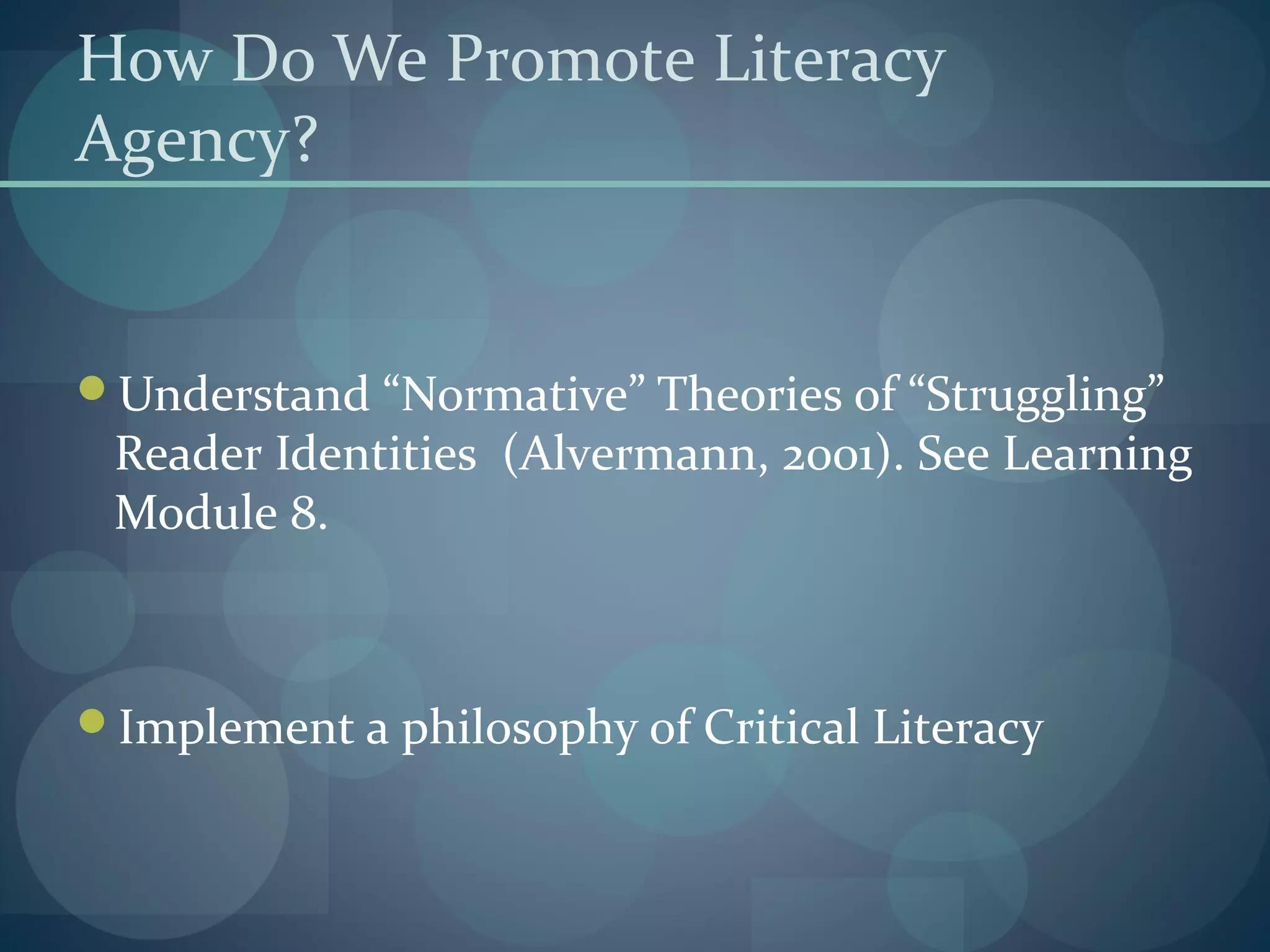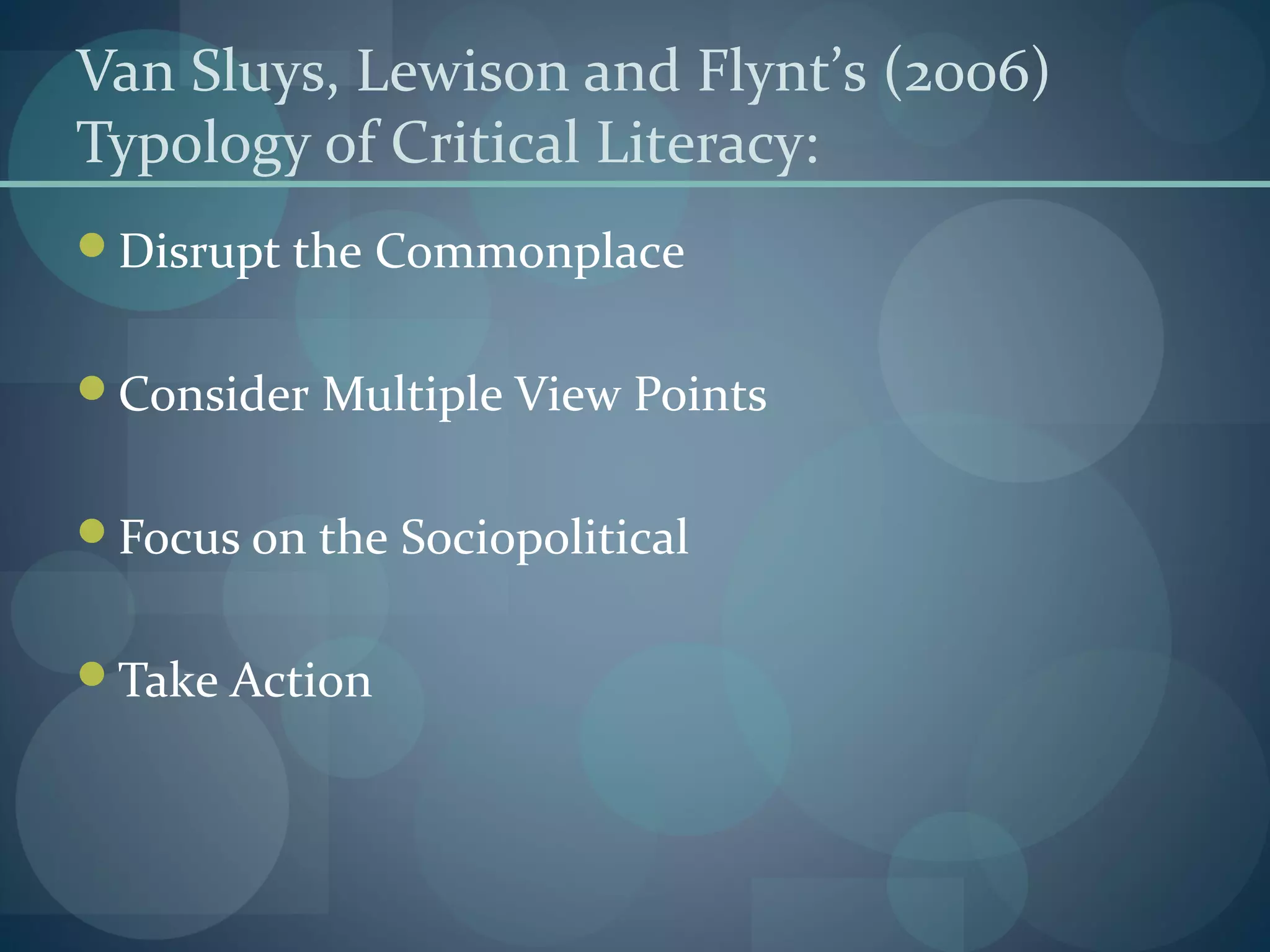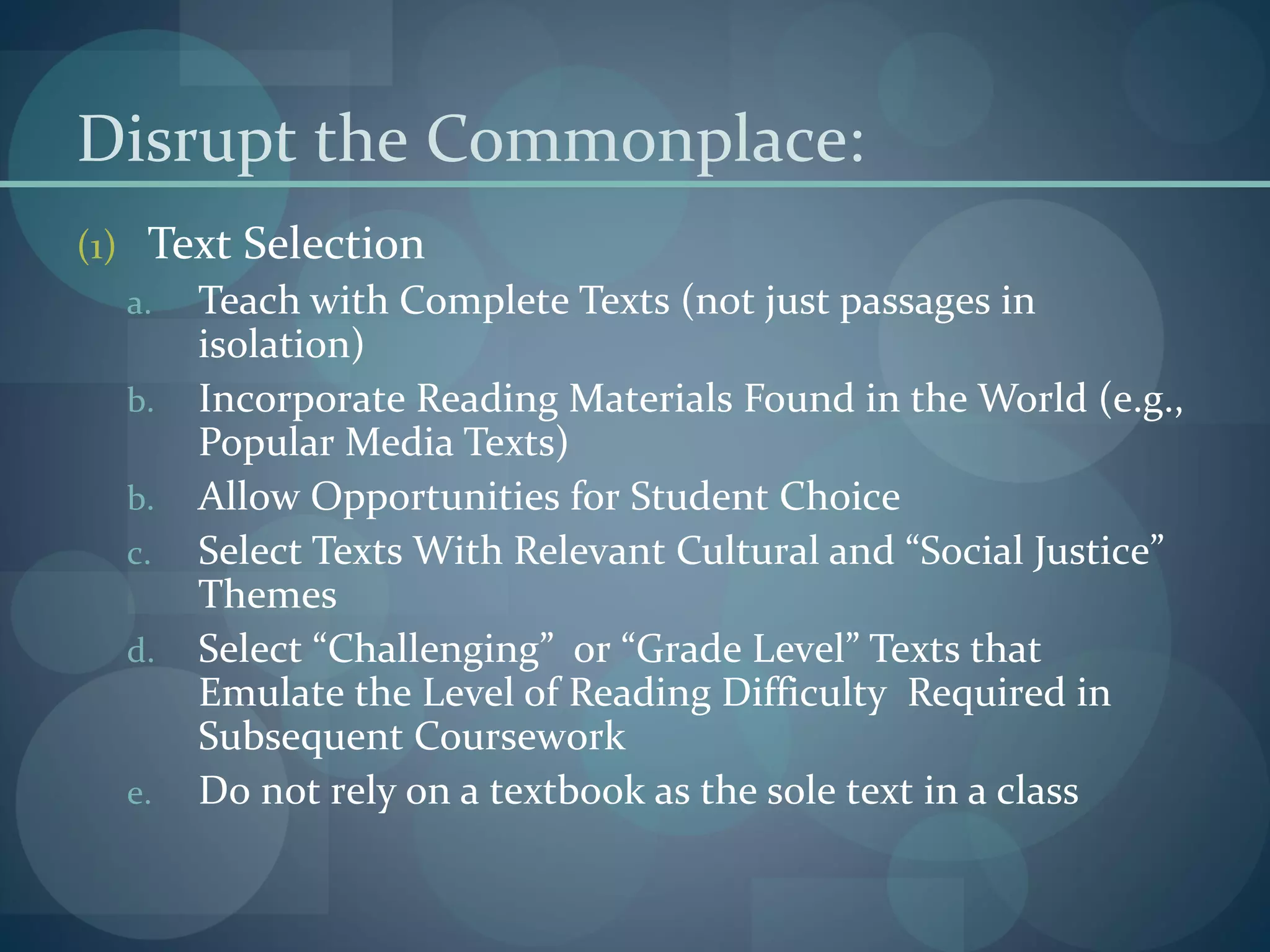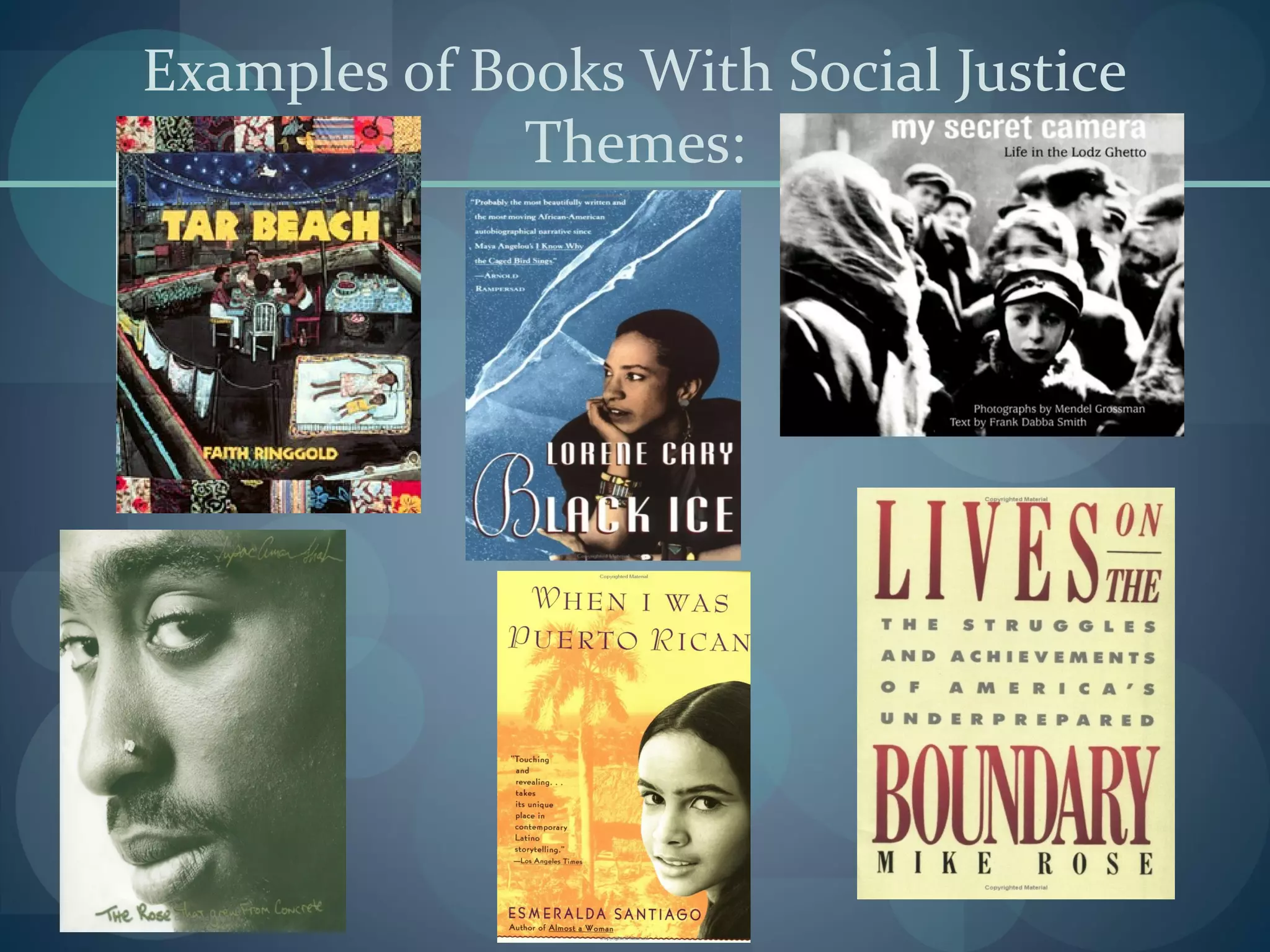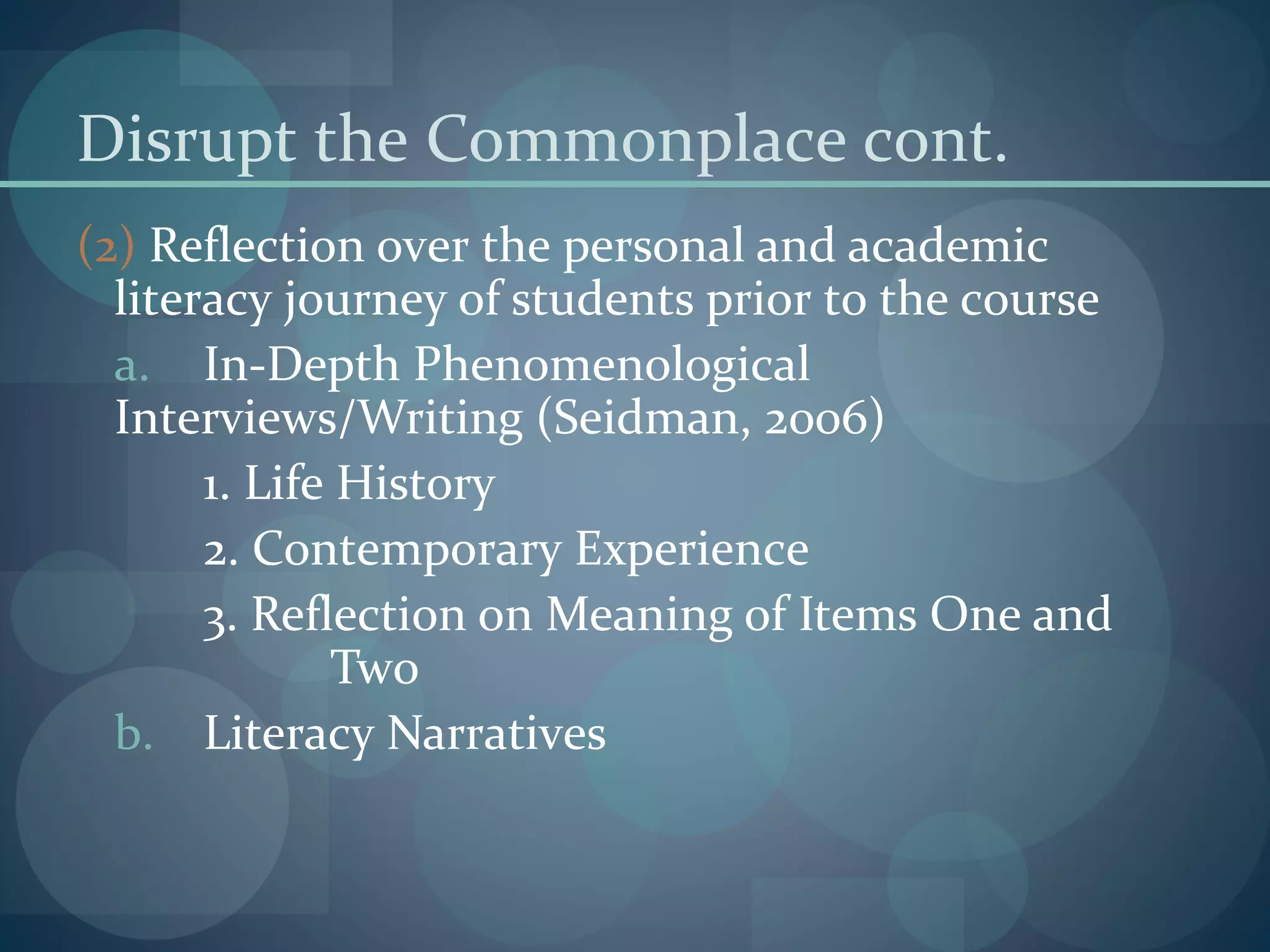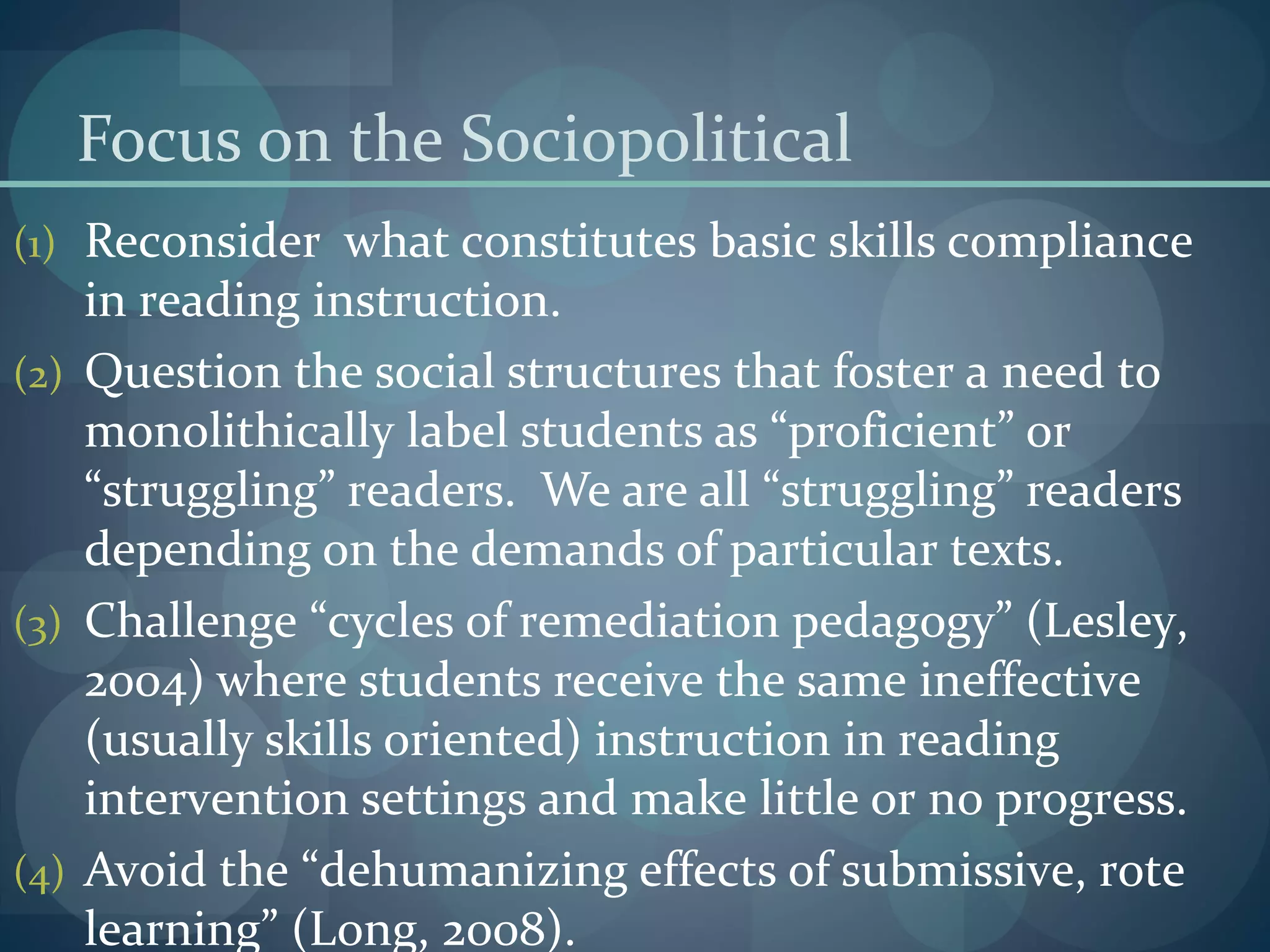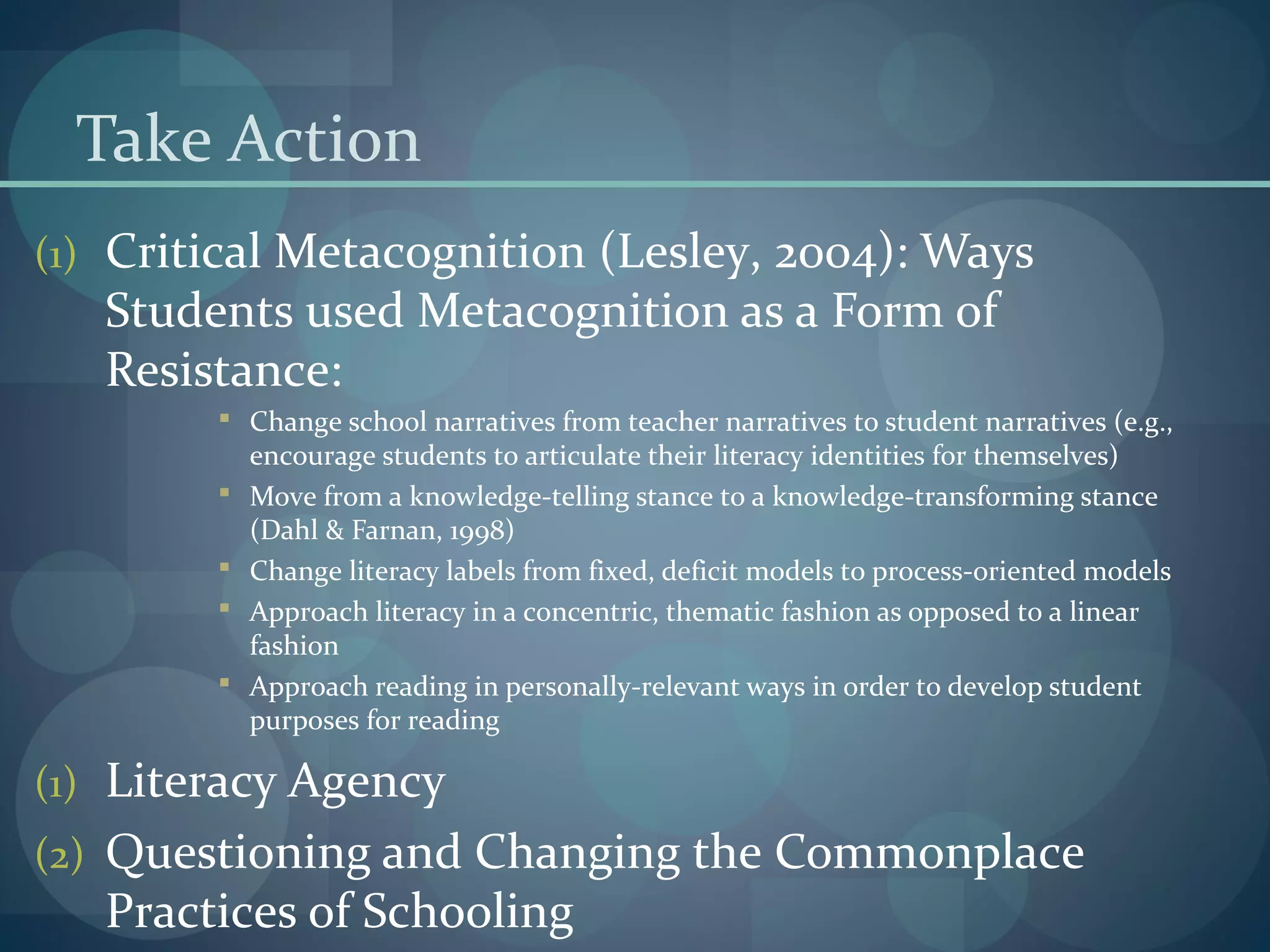The document discusses the need for critical literacy instruction for four students who struggle with reading. It describes how each student views reading and their literacy identities. The document advocates disrupting commonplace reading practices by selecting texts with social justice themes, considering multiple perspectives, focusing on the sociopolitical aspects of reading, and empowering students to take action and develop literacy agency. The goal is to help students view reading differently and become engaged readers by addressing the underlying theories that have guided ineffective instruction and disengagement in the past.
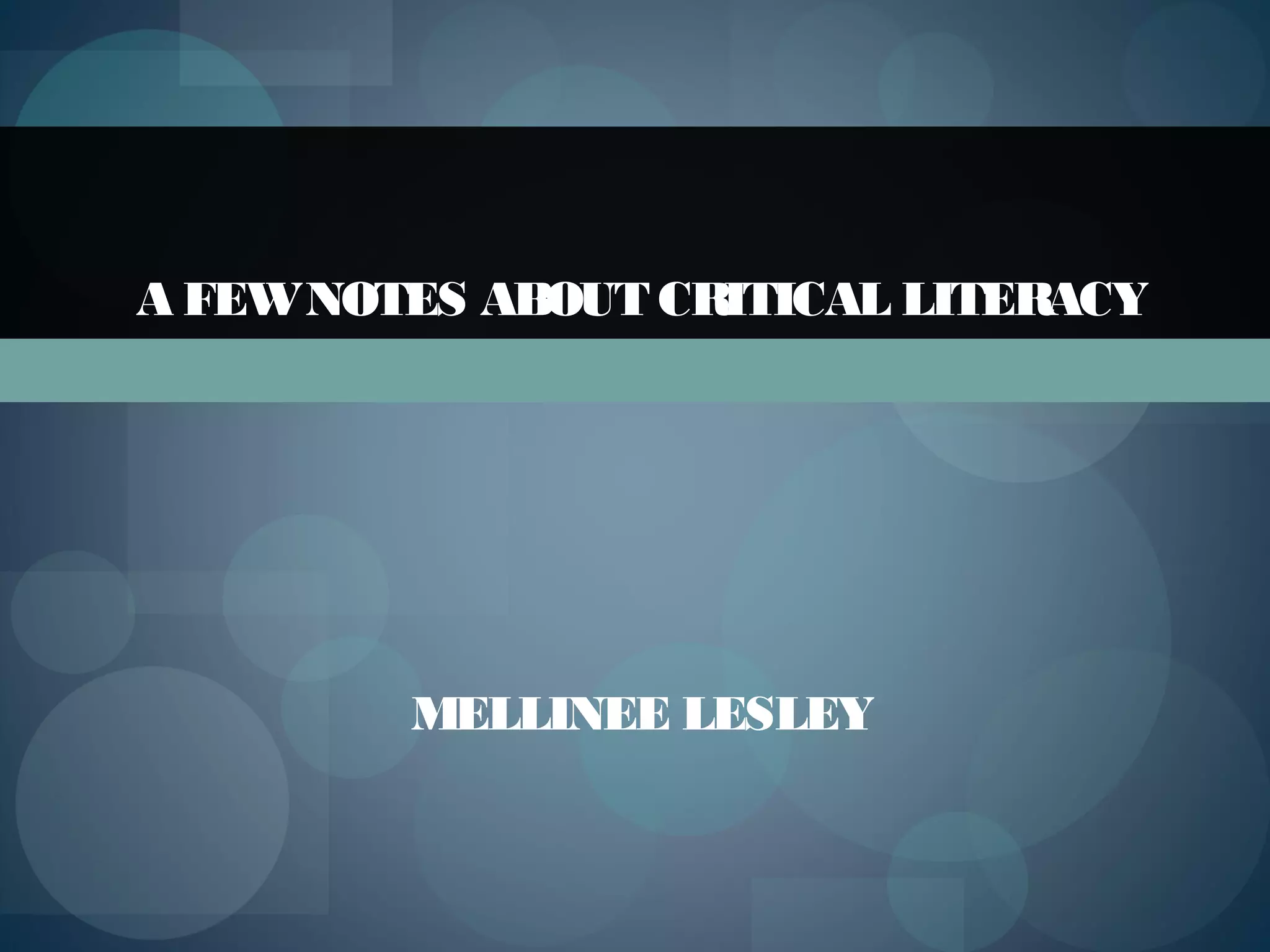
![Second Grade Elementary Student:
“The [reading] test is not the easiest, you know. You
have to put proof on it and sometimes there’s 20 or
more questions. You have to read in the test, and it
could be about anything. When I’m not doing the
test, just normal reading, I enjoy it. I just go with
the flow. So, I have to practice a lot and stay slow on
a [reading] test.”](https://image.slidesharecdn.com/notesaboutcriticalliteracy-140318231835-phpapp02/75/Notes-about-critical-literacy-2-2048.jpg)
